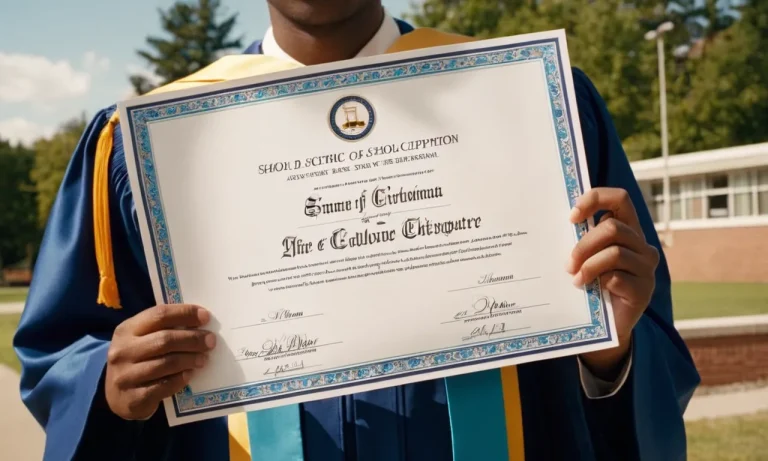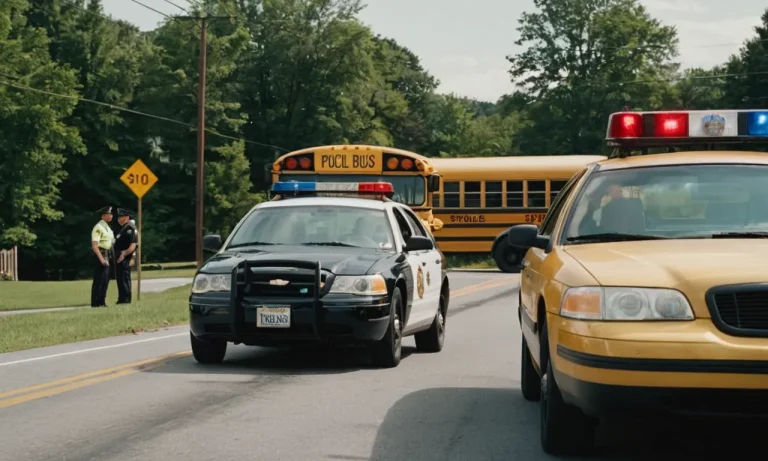In today’s digital age, smartphones have become an integral part of our lives, especially for students. However, the question of whether schools can search a student’s phone without permission has been a topic of heated debate, raising concerns about privacy rights and the extent of a school’s authority.
If you’re short on time, here’s a quick answer to your question: Schools generally have the legal authority to search a student’s phone without permission if they have reasonable suspicion that the device contains evidence of a violation of school rules or policies, or if there is a potential threat to the safety and well-being of students and staff.
In this comprehensive article, we will delve into the legal framework surrounding this issue, explore the rights of students and the responsibilities of schools, and provide practical guidance on how to navigate this complex situation.
We will also examine real-life cases and court rulings that have shaped the current landscape.
Legal Framework: Understanding the Laws and Regulations
The issue of whether schools can search students’ phones without permission is a complex one, governed by a web of constitutional rights, state laws, and school district policies. At the heart of the matter lies the Fourth Amendment of the U.S. Constitution, which protects individuals against unreasonable searches and seizures by the government.
However, this constitutional right is balanced against the need for schools to maintain a safe and orderly learning environment.
Constitutional Rights and the Fourth Amendment
The Fourth Amendment’s protection against unreasonable searches extends to public school students, as established by the landmark Supreme Court case New Jersey v. T.L.O. (1985). The Court ruled that students have a legitimate expectation of privacy at school, but that this right must be balanced against the school’s responsibility to maintain discipline and order.
As a result, school officials can conduct searches of students’ belongings, including phones, as long as they have “reasonable suspicion” that the search will uncover evidence of a violation of school rules or the law.
State Laws and School District Policies
In addition to the federal constitutional framework, many states have enacted laws and regulations that govern the search and seizure of students’ electronic devices in schools. For example, California law prohibits school officials from searching a student’s electronic device without a warrant, unless there is a “reasonable suspicion” that the device contains evidence of a violation of school rules or the law.
Similarly, many school districts have adopted policies that outline the circumstances under which a student’s phone can be searched, often requiring parental notification and consent.
The Concept of ‘Reasonable Suspicion’
The key legal standard that allows schools to search students’ phones without permission is “reasonable suspicion.” This means that school officials must have specific and articulable facts that lead them to believe that a student has violated or is violating school rules or the law.
A mere hunch or suspicion is not enough to justify a search. According to data from the American Civil Liberties Union (ACLU), students of color are disproportionately disciplined in schools, raising concerns about the potential for bias in determining “reasonable suspicion.”
While the legal framework surrounding the search of students’ phones is complex, it’s clear that schools must balance students’ privacy rights with the need to maintain a safe and orderly learning environment.
Ultimately, the decision to search a student’s phone without permission should be based on a careful consideration of the specific circumstances and a thorough understanding of the relevant laws and policies.
Balancing Student Privacy and School Safety
In today’s educational landscape, ensuring a safe and secure learning environment is a top priority for schools. However, this goal must be carefully balanced with respecting students’ reasonable expectation of privacy.
As technology continues to permeate every aspect of our lives, the question of whether schools can search students’ phones without permission has become a contentious issue.
The Importance of Maintaining a Safe Learning Environment
Schools have a legal and ethical responsibility to provide a safe and nurturing environment for their students. This includes taking proactive measures to prevent and address issues such as bullying, harassment, drug use, and violence.
In some cases, searching a student’s phone may be necessary to investigate potential threats or incidents that compromise the safety and well-being of the school community. According to a study by the National Center for Education Statistics, approximately 20% of students reported being bullied at school in 2019, highlighting the need for effective intervention strategies.
Respecting Students’ Reasonable Expectation of Privacy
While school safety is paramount, it is equally important to respect students’ reasonable expectation of privacy. Students do not shed their constitutional rights at the schoolhouse gate, as affirmed by the U.S. Supreme Court.
Unreasonable searches and seizures can violate students’ Fourth Amendment rights and undermine trust between students and school authorities. A recent survey by the National PTA found that 62% of parents expressed concerns about their children’s privacy being compromised at school.
Establishing Clear Policies and Procedures
To strike a balance between these competing interests, schools must establish clear policies and procedures governing when and how student phone searches can be conducted. These policies should be developed in consultation with legal experts, educators, parents, and students themselves.
Some key considerations include:
- Defining reasonable suspicion standards for initiating a search
- Ensuring searches are conducted in a minimally intrusive manner
- Providing proper training for school staff on search procedures
- Establishing protocols for handling and securing seized devices
- Implementing robust data privacy safeguards
Ultimately, the issue of student phone searches highlights the delicate balance that schools must strike between maintaining a safe learning environment and respecting students’ privacy rights. By fostering open communication, establishing clear guidelines, and upholding legal and ethical standards, schools can navigate this complex issue in a manner that prioritizes both safety and privacy.
After all, creating a positive and nurturing educational environment requires a holistic approach that values the well-being and dignity of all students.
Practical Considerations and Best Practices
Conducting Lawful and Reasonable Searches
When it comes to searching a student’s phone on school premises, it’s crucial for administrators and educators to strike a delicate balance between maintaining a safe learning environment and respecting students’ privacy rights.
The legality of such searches hinges on the concept of “reasonableness” and the specific circumstances involved. According to the landmark Supreme Court case New Jersey v. T.L.O., school officials can search a student’s belongings, including their phone, if they have a reasonable suspicion that the search will uncover evidence of a violation of school rules or the law.
To ensure lawful and reasonable searches, schools should have clear policies and procedures in place. These policies should outline the specific circumstances that warrant a search, the steps to be followed, and the individuals authorized to conduct the search.
It’s essential that these policies are consistently applied and that searches are not conducted in an arbitrary or discriminatory manner.
Involving Parents and Guardians
Involving parents or guardians in the search process can help foster transparency and accountability. While schools are not legally required to obtain parental consent before searching a student’s phone, it’s generally considered a best practice to inform parents or guardians about the search and the reasons behind it.
This open communication can help build trust and understanding between schools and families, and it can also provide an opportunity for parents or guardians to offer relevant context or information that may aid in the investigation.
However, it’s important to note that in certain situations, such as cases involving potential criminal activity or immediate safety concerns, schools may need to act swiftly and conduct a search without prior parental notification.
In these instances, parents or guardians should be informed as soon as possible after the search has been conducted.
Documenting the Search Process
Thorough documentation of the search process is crucial for several reasons. First, it helps ensure that the search was conducted in accordance with established policies and procedures. Second, it creates a record that can be referenced if there are any disputes or legal challenges regarding the search.
And third, it promotes transparency and accountability within the school system.
When documenting a search, schools should record the following information:
- The specific reasons for the search (e.g., reasonable suspicion of a violation)
- The individuals involved (e.g., the student, the searcher, any witnesses)
- The date, time, and location of the search
- A detailed description of the search process and any items or information found
- Any relevant follow-up actions taken (e.g., disciplinary measures, law enforcement involvement)
Maintaining accurate and comprehensive records not only protects the school but also helps ensure that students’ rights are respected and that searches are conducted in a fair and impartial manner. 😊
Case Studies and Court Rulings
Landmark Cases Shaping the Legal Landscape
The issue of whether schools can search students’ phones without permission has been a contentious topic, with several landmark cases shaping the legal landscape. One of the most significant rulings came in the 2014 case of G.W.
v. Casey, where the US Court of Appeals for the Sixth Circuit held that a school’s search of a student’s phone violated the Fourth Amendment’s protection against unreasonable searches and seizures. The court ruled that the search was not justified at its inception, as there was no reasonable suspicion that the student had engaged in any wrongdoing.
Another notable case is the 2021 Mahanoy Area School District v. B.L. decision by the US Supreme Court. The court ruled that the school district violated a student’s First Amendment rights by punishing her for a profane social media post made off-campus.
While the case focused on free speech, it also highlighted the importance of respecting students’ privacy rights regarding their personal devices.
Recent Court Decisions and Their Implications
In recent years, several court decisions have further clarified the boundaries of school authorities’ ability to search students’ phones. According to a report by the Electronic Frontier Foundation, in 2022, a federal court ruled in Jalinski v. Morgan Hill Unified School District that a school’s search of a student’s phone and social media accounts violated the Fourth Amendment.
The court emphasized that schools must have reasonable suspicion of a specific violation before conducting such searches.
Another notable case is Gallimore v. Henrico County School Board, where a federal appeals court in 2023 ruled that a school’s confiscation and search of a student’s phone without reasonable suspicion was unconstitutional.
The court highlighted that students’ privacy rights extend to their personal devices, even on school premises. These rulings underscore the need for schools to balance their interests in maintaining a safe environment with students’ constitutional rights to privacy and free speech.
Lessons Learned from Real-Life Scenarios
Real-life scenarios have further highlighted the complexities surrounding school searches of students’ phones. In 2021, a high school in California made headlines when administrators searched hundreds of students’ phones after a fight broke out on campus.
While the school cited safety concerns, the incident sparked outrage among parents and civil liberties advocates, who argued that the search was an overreach of authority.
These cases and incidents serve as valuable lessons for schools, policymakers, and the public. They underscore the need for clear policies and guidelines that balance school safety with students’ constitutional rights.
As technology continues to evolve, it’s crucial to strike the right balance and ensure that students’ privacy and civil liberties are protected while maintaining a safe and conducive learning environment.
Ongoing dialogue, legal precedents, and a nuanced understanding of this complex issue are essential for navigating this challenging terrain.
Conclusion
The issue of whether schools can search a student’s phone without permission is a complex and multifaceted one, requiring a careful balance between maintaining a safe learning environment and respecting students’ reasonable expectation of privacy.
While schools generally have the legal authority to conduct searches under certain circumstances, it is crucial that they follow established laws, regulations, and policies to ensure that these searches are lawful and reasonable.
As technology continues to evolve and become more integrated into our daily lives, it is essential for schools, parents, and students to stay informed about their rights and responsibilities. By fostering open communication, establishing clear policies, and adhering to best practices, schools can navigate this challenging terrain while upholding the principles of fairness, transparency, and respect for individual privacy.






